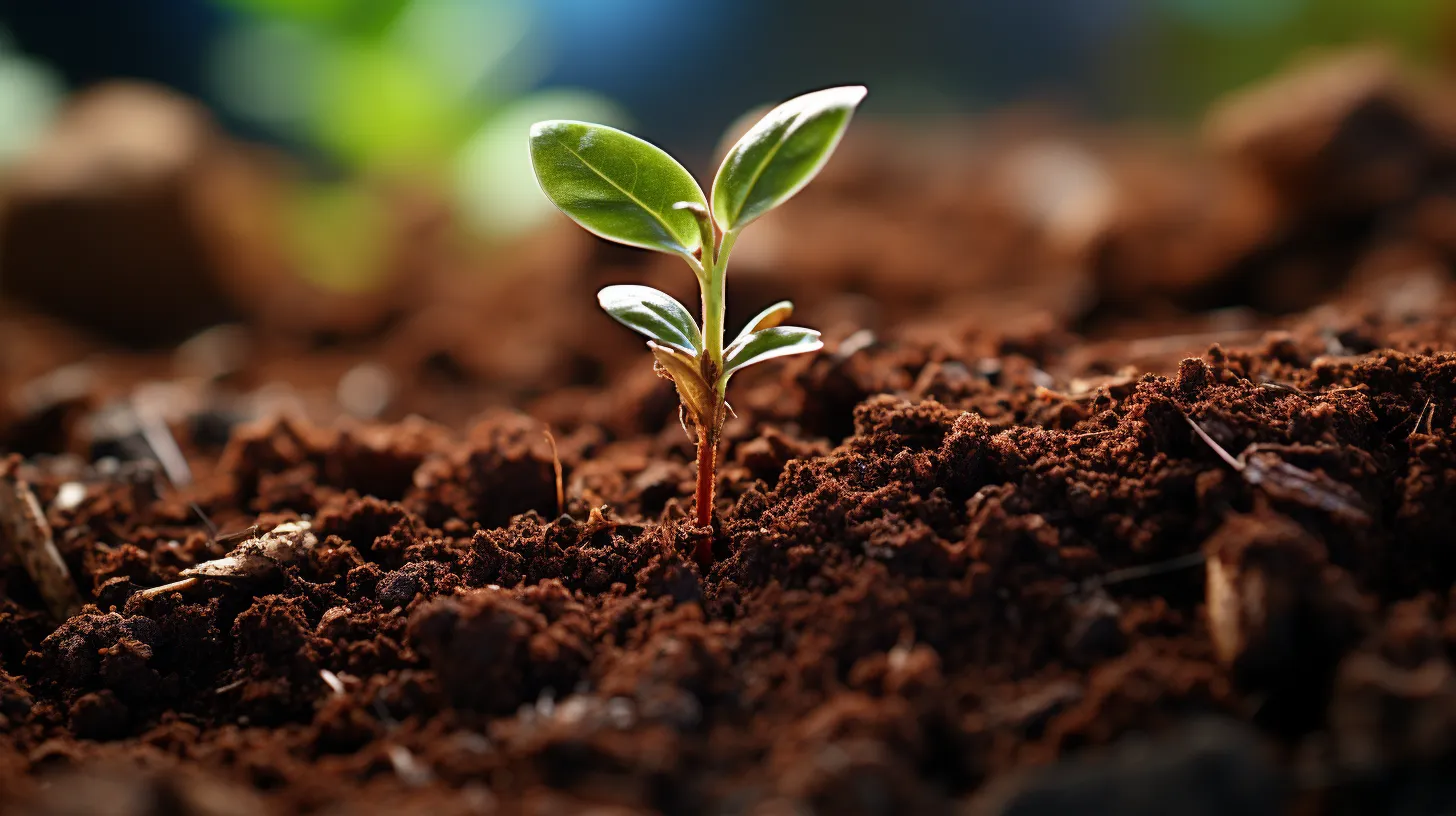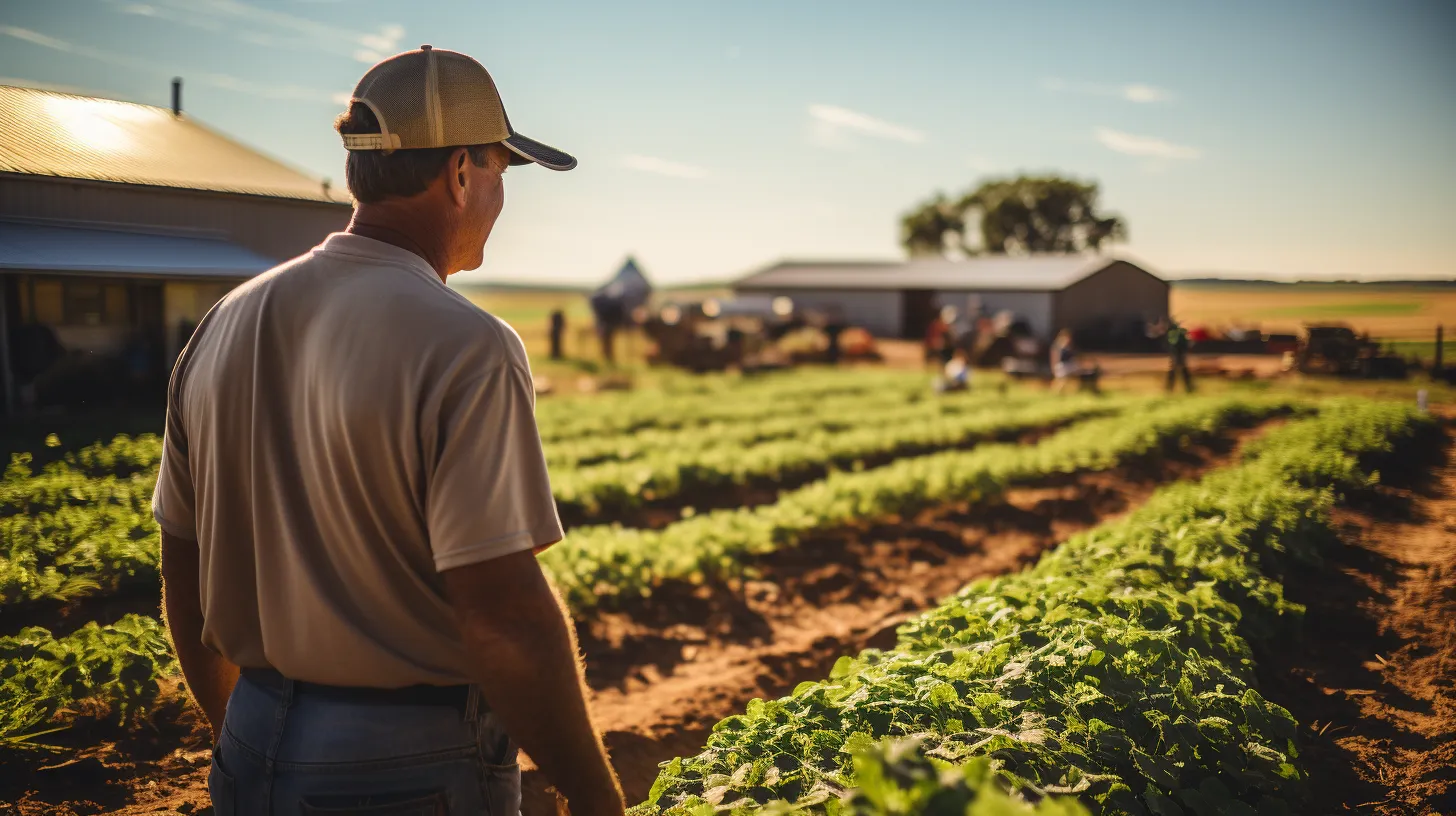In the field of agriculture, one crucial factor often overlooked and underestimated is the soil. The soil is not just mere dirt; it is the lifeblood that sustains our planet, providing the nourishment necessary to feed billions of people and fuel agricultural endeavors. However, with the challenges posed by soil degradation, traditional agricultural practices may no longer be sufficient. This is where soil testing emerges as a beacon of hope, guiding farmers toward a more sustainable and efficient future.
Soil testing is a fundamental process that involves analyzing soil samples to determine their nutritional content, pH levels, organic matter, and potential pollutants. With these vital insights, farmers can make informed decisions regarding crop selection, proper fertilizer use, and irrigation strategies, ultimately optimizing yields while minimizing negative environmental impacts and effects. Soil testing forms the foundation of sustainable agriculture, a holistic approach that aims to balance economic viability, social equality, and environmental health.
In this article, we will explore why soil testing has become an essential tool in modern agriculture. We will examine how soil testing improves soil fertility, increases crop yield, enhances resilience to changing climates, and can help reverse soil degradation. Furthermore, we will shed light on the various soil testing methods and technologies available today, equipping farmers with the knowledge to make the best decisions for their agricultural practices.
Join us on a journey into the intricate world of soil testing. As we uncover its pivotal role in agriculture, we invite you to see how it’s shaping a sustainable and prosperous future for us all.

What is Soil Testing and How Does it Work?
Soil testing is a scientific technique that evaluates the characteristics and properties of soil in a specific area. It involves the collection of soil samples from various points within a field or garden, which are then analyzed in a laboratory to assess the soil’s fertility, nutrient content, pH level, and other important aspects. Soil testing provides crucial information that helps farmers, gardeners, and land managers make informed decisions regarding crop selection, fertilizer application, and soil amendment activities. Many state universities, agricultural extension services, and reputable companies like RhizeBio offer soil testing services.
The process of soil testing typically involves the following steps:
1. Sample Collection
Soil samples are collected from different areas of the field or garden, considering factors such as soil type, topography, and historical land use. Soil cores are usually collected using a soil auger or soil probe, capturing variations in soil properties at multiple depths.
2. Sample Preparation
The soil samples are carefully cleaned to remove any debris or plant material. Proper sample preparation is crucial for accurate soil test results during laboratory analysis. The timing of soil sampling is also important, with the ideal time being shortly before planting or after harvest. Farmers should collect soil samples and also keep records of their soil testing data to track changes in soil health over time.
3. Soil Analysis
The prepared soil samples are sent to a soil testing laboratory, where they undergo a series of tests. These tests may include nutrient analysis to determine levels of nitrogen, phosphorus, potassium, and other essential elements, pH measurement, assessment of organic matter content, and examination of other soil qualities such as cation exchange capacity (CEC) and soil texture. Once the soil analysis is complete, the test results are reviewed by experts or agricultural professionals who interpret the data to determine the soil’s fertility status, identify nutrient deficiencies or excesses, evaluate pH levels, and assess overall soil health.
Soil testing provides valuable insights into the soil’s composition and condition, enabling farmers and land managers to make informed decisions that enhance crop productivity, soil health, and environmental sustainability. By understanding the specific characteristics of their soil, they can apply fertilizers more accurately, optimize irrigation strategies, and implement appropriate soil management practices for long-term productivity and environmental stewardship.

Types of Soil Testing and Their Objectives
Soil tests are essential tools for assessing soil’s nutrient content, levels, and pH, reducing risk in the soil such as soil erosion and improving overall health of the soil. Different types of soil tests serve specific objectives and provide valuable information to farmers, gardeners, and land managers. Here are some common types of soil tests and their objectives:
-
Soil Nutrient Testing
Soil nutrient testing is primarily focused on detecting the availability of essential nutrients in the soil, such as nitrogen, phosphorus, potassium, calcium, magnesium, sulfur, iron, zinc, and other micronutrients. This information helps in formulating appropriate fertilizer and biological input recommendations and ensures that the soil contains the necessary nutrients for optimal crop growth. In agricultural settings, soil nutrient testing is very important for improved soil health and crop production.
-
Soil PH Testing
Soil pH testing determines the acidity or alkalinity of the soil. The pH level of the soil has a significant impact on plant nutrition availability. Different plants thrive in different pH ranges, so knowing the pH of the soil helps in selecting suitable plant species and adjusting the pH through soil amendments like lime or sulfur to create a healthy soil and a favorable environment for the intended crops.
-
Soil Organic Matter Testing
Soil organic matter testing assesses the percentage of organic material in the soil, such as decomposed plant and animal residues. Organic matter is crucial for soil structure, water retention, nutrient holding capacity, and microbial activity. Soil organic matter testing helps evaluate soil health and determine the need for organic matter amendments like compost or cover crops to enhance soil fertility and overall productivity.
-
Cation Exchange Capacity Testing
Cation Exchange Capacity (CEC) testing measures the soil’s ability to retain and exchange cations, which are positively charged ions like calcium, potassium, and magnesium. Soils with higher CEC can store more nutrients, reducing the risk of nutrient leaching. CEC testing helps in understanding soil fertility and making informed decisions about nutrient and crop management practices, thereby improving soil health.
-
Soil Texture and Salinity Testing
Soil texture refers to the proportion of sand, silt, and clay particles in the soil. Poor soil texture can impact water infiltration, drainage, root penetration, and nutrient retention. Soil texture analysis helps identify soil types and guides irrigation and agricultural strategies. On the other hand, soil salinity testing measures the concentration of soluble salts in the soil. High salt levels can affect plant growth by interfering with water uptake and nutrient absorption. Soil salinity testing assists in identifying saline soils and implementing appropriate management practices like leaching and selecting salt-tolerant crops.
-
Soil Contamination Testing
Soil contamination testing aims to detect the presence and concentration of hazardous substances in the soil, such as heavy metals and pollutants. It is crucial for assessing environmental risks and determining the suitability of land for specific activities like agriculture or construction.
-
Soil DNA Testing
Soil DNA testing is an advanced technique that delves into the intricate microbial communities residing in the soil. By identifying and characterizing these microorganisms through their DNA, we gain an unprecedented understanding of the role these entities play in soil health, fertility, and productivity. In addition, soil DNA testing provides insights into how these microbial communities might respond to various management practices and environmental changes, which in turn can inform the development of targeted strategies to enhance soil performance and agricultural productivity. This unique lens into the soil’s biological components aids in the evolution of soil science and sustainable agriculture.
Each type of soil test provides valuable information that enables farmers and land managers to make informed decisions about soil management practices, nutrient supplementation, and remediation strategies where necessary. By understanding the specific characteristics of their soil, they can optimize their farming practices, enhance crop productivity, and minimize negative environmental impacts.

What are the Soil Testing Benefits for Farmers?
Farmers reap numerous benefits from the soil testing process as it contributes to optimal crop growth and farm sustainability. Let’s explore the advantages that soil testing offers:
-
Enhanced Nutrient Management Practices
Regular soil testing provides crucial information about the nutrient levels in the soil. By understanding the exact nutrient concentrations, farmers can apply fertilizers more accurately, avoiding under or over-application. This improves nutrient uptake by plants, ensuring they receive the proper mix of essential nutrients for robust growth and increased crop yields. Effective nutrient management also reduces the risk of nutrient leaching, which can lead to environmental contamination and water quality issues.
-
Improved Soil Health
Soil testing evaluates not only nutrient levels but also factors such as pH, organic matter content, and cation exchange capacity (CEC). By understanding these parameters, farmers can identify potential soil health issues and implement appropriate soil management practices. For example, if the soil is too acidic, lime can be added to raise the pH, creating a more favorable environment for beneficial soil microbes and nutrient availability. Proactively addressing soil health concerns improves soil structure, fertility, and overall productivity while preventing soil degradation.
-
Optimal pH Regulation
Soil pH has a significant impact on plant nutrition availability. Different crops have specific pH requirements for optimal growth. Soil testing helps identify whether the current pH is suitable for the intended plants. If the pH deviates from the ideal range, corrective measures such as the use of soil amendments like lime or sulfur can be employed. Proper pH management promotes more plant nutrient uptake, microbial activity, and root development, resulting in healthier and more resilient plants.
-
Identification of Nutrient Deficiencies and Toxicities
Soil testing can detect nutrient deficiencies and toxicities in plants before visible symptoms even appear. Addressing these issues early on helps reduce crop losses and allows for targeted nutrient supplementation or corrective actions. For example, if a phosphorus deficiency is identified in the soil test, appropriate phosphorus-containing fertilizers can be applied to promote root growth and flowering. Likewise, excessive levels of certain nutrients can be harmful to plants, and soil testing helps detect and address such imbalances, enabling growers to take prompt corrective action.
-
Cost-Effective Resource Management
Regular soil testing leads to long-term cost savings for farmers. Accurate assessment of soil health helps optimize the use of fertilizers and other soil amendments, preventing unnecessary purchases and reducing the risk of environmental pollution due to excess fertilizer application. Additionally, by identifying potential soil issues early on, farmers can implement suitable crop management techniques to prevent crop losses, thereby increasing their return on investment and supporting sustainable agricultural practices.
-
Soil Pollution and Contaminant Detection
Soil contamination poses significant environmental risks, affecting both terrestrial and aquatic ecosystems. Soil testing plays a critical role in identifying and measuring the presence of contaminants such as heavy metals and pollutants. By analyzing soil samples, environmental scientists can estimate the extent of contamination and develop appropriate cleanup strategies to mitigate the adverse impacts. Regular soil testing not only aids in the detection of contaminants but also enables monitoring of the progress of remediation activities, ensuring the restoration of healthy soils and sustainable soil ecosystems.
-
Promoting Environmental Stewardship
Soil testing empowers individuals, farms, and industries to become good environmental stewards by making informed decisions about land use and agricultural practices. By assessing soil health, including nutrient levels and organic matter content, landowners can implement sustainable gardening and landscaping techniques, reducing the reliance on chemical inputs and promoting the use of organic amendments. Additionally, optimizing fertilizer and nutrient application based on soil test data reduces the risk of nutrient runoff, minimizing water pollution and supporting environmental conservation efforts.
In total, soil testing offers numerous benefits to farmers, enabling them to enhance nutrient management practices, improve soil health, optimize pH regulation, identify nutrient deficiencies and toxicities, achieve cost-effective resource management, detect soil pollution and contaminants, and promote environmental stewardship. By integrating soil testing into their farming practices, farmers can optimize their yields, minimize impacts on the soil’s ecosystem, and contribute to the long-term sustainability of agriculture.

Integrating Soil Test Results into Farming Practices
Integrating soil test results into farming practices is essential for farmers to maximize the benefits gained from soil testing. Here are some ways to effectively incorporate soil test results into agricultural operations:
Interpreting Soil Test Reports and Recommendations
Understanding soil test reports and recommendations is the first step in utilizing soil test results. Farmers should familiarize themselves with the information provided in the report, including nutrient levels, pH, and other soil parameters. By interpreting the data correctly, farmers can make informed decisions regarding fertilizers, soil amendments, and crop management practices. It is crucial to seek guidance from agricultural experts or consult agricultural extension services if assistance is needed in interpreting the soil test report results accurately.
Precision Agriculture’s Tailored Solutions for Specific Areas
Precision agriculture is an agricultural revolution that uses advanced technology like GPS, sensors, and data analytics to manage fields with more accuracy and efficiency. Farmers can adapt solutions to specific locations by separating fields into smaller management zones based on soil variability, water content, and nutrient levels. This method optimizes the use of biologicals, fertilizers, irrigation, and other inputs, reducing waste and environmental effects. Precision agriculture enables farmers to optimize yields while conserving resources and preserving soil health for long-term farming practices.
Long-Term Planning for Soil Health and Farm Sustainability
Incorporating soil test results into long-term planning is critical for ensuring soil health and farm sustainability. Farmers can implement conservation measures such as crop rotation, cover cropping, and reduced tillage to improve soil structure, fertility, and biodiversity. Increasing organic matter content through the addition of organic amendments like compost or manure enhances soil nutrients through nutrient cycling and water retention. Integrating agroforestry and agroecological principles also promotes ecosystem resilience and overall farm sustainability. Prioritizing and continuously improving soil health through responsible land management lays the foundation for productive and eco-friendly farming practices that can be sustained for generations.
Monitoring and Evaluation
Regular monitoring and evaluation of soil health are vital for assessing the effectiveness of soil management practices and adjusting strategies accordingly. Farmers should track changes in soil nutrient levels, pH, and other soil parameters over time to identify trends and make necessary adjustments. By monitoring soil health, farmers can proactively address any emerging issues and ensure the long-term productivity and sustainability of their farms.
By integrating soil test results into farming practices, farmers can make informed decisions that optimize fertilization, promote soil health, improve crop yields, and minimize environmental impacts. Regular soil testing and monitoring provide the foundation for sustainable agricultural practices, leading to increased yields, improved crop quality, and a healthier environment. By embracing soil testing as a valuable tool, farmers can achieve long-term success while preserving the health and productivity of their land.

Challenges and Future Perspective in Soil Testing
While soil testing offers numerous benefits, there are also challenges that need to be addressed for its widespread adoption and effectiveness. Additionally, there are exciting opportunities to improve soil testing in the future. Let’s explore these challenges and future perspectives:
Overcoming Barriers to Adoption
One of the main barriers to soil testing adoption is the lack of awareness and understanding among farmers. Many farmers may not fully grasp the importance and benefits of soil testing methods, leading to reluctance in seeking soil testing services. Education and awareness campaigns are critical to highlighting the significance of soil testing and its impact on crop productivity and soil sustainability. Providing farmers with access to affordable soil testing services, particularly in remote or underserved areas, is also important for increasing adoption rates.
Advancements in Soil Testing Technologies
Technological advancements hold great promise for improving soil testing practices. Portable and rapid testing instruments can allow for on-the-spot soil sampling and analysis, providing real-time data for immediate decision-making. Remote sensing technologies, coupled with geographic information system (GIS) data, offer the ability to assess soil health and variability over large areas. Artificial intelligence and machine learning can enhance the accuracy and predictive capabilities of soil data analysis. Continued research and development in these areas will lead to more efficient and effective soil testing methodologies.

Integration with Digital Agricultural Platforms
Integrating soil testing results and data with digital agricultural platforms can revolutionize how farmers manage their farms. By incorporating soil test results into comprehensive farm management software, farmers can have a holistic view of their fields and make data-driven decisions. These platforms can provide recommendations for the application of inputs, crop selection, and other agronomic practices based on soil test results and other data. Integrating soil testing with digital platforms streamlines information management and facilitates precision farming practices.
Soil Health Monitoring Networks
Establishing soil health monitoring networks can provide farmers with long-term data on soil health trends and changes. These networks can include soil testing laboratories, research institutions, and farmers who contribute data on a regular basis. The collective data from these networks can provide valuable insights into regional soil health patterns, enabling farmers to benefit from shared knowledge and experience. Soil health monitoring networks can foster collaboration and information exchange, improving soil management practices on a larger scale.
Collaboration between Stakeholders
Collaboration between various stakeholders is crucial for advancing soil testing practices. Governments, research institutions, agricultural extension services, private companies, and farmers need to work together to develop standardized protocols, improve access to soil testing services, and share knowledge. Collaboration can also help address challenges such as soil contamination and develop innovative solutions for sustainable soil management. By working together, stakeholders can leverage their expertise and resources to drive the adoption and effectiveness of various soil testing methods.
In total, while soil testing offers significant benefits for farmers and the environment, certain challenges need to be addressed for its widespread adoption and effectiveness. By overcoming barriers to adoption, embracing technological advancements, integrating soil testing with digital agricultural platforms, establishing soil health monitoring networks, and fostering collaboration between stakeholders, the future of soil testing looks promising. With continued research, innovation, and collective efforts, soil testing can play a pivotal role in enhancing sustainable farming practices and ensuring the long-term health and productivity of agricultural lands.
Final Conclusion
Soil testing is a vital tool in modern agriculture, guiding farmers towards sustainable farming practices and enabling them to maximize crop yields while minimizing environmental impacts. By analyzing soil samples, farmers can gain valuable insights into the nutrient content, pH levels, organic matter, and potential contaminants present in their soil. This information forms the basis for informed decision-making regarding crop selection, fertilizer application, and soil management practices.
The benefits of soil testing for farmers are manifold. It allows for enhanced nutrient management, ensuring that crops receive the necessary nutrients for optimal growth while minimizing excesses and nutrient runoff. Soil testing also improves soil health by addressing pH imbalances, identifying nutrient deficiencies or toxicities, and guiding appropriate soil amendments. Furthermore, it enables farmers to make cost-effective resource management decisions, conserving inputs and reducing environmental pollution.
Integrating soil test results into farming practices is essential for maximizing the benefits of soil testing. By interpreting soil test reports and recommendations, adopting precision agriculture techniques, planning for long-term soil health, and monitoring soil conditions over time, farmers can optimize their agricultural practices and contribute to farm sustainability.

While there are challenges to overcome, such as raising awareness and improving accessibility to soil testing services, advancements in technology and increased collaboration among stakeholders offer promising opportunities. The integration of portable testing instruments, remote sensing technologies, and digital agricultural platforms can further enhance the efficiency and effectiveness of soil testing. Additionally, the establishment of soil health monitoring networks and closer collaboration between governments, research institutions, and farmers can facilitate knowledge exchange and drive continuous improvement in soil testing practices.
In conclusion, soil testing plays a crucial role in fostering sustainable farming practices and ensuring the long-term health and productivity of agricultural lands. By harnessing the power of soil testing, farmers can optimize their yields, minimize environmental impacts, and contribute to a more sustainable and resilient agricultural system. In the endeavor to bridge agriculture, environmental protection, and the prosperity of future generations, soil testing emerges as a fundamental tool.
For an in-depth analysis of your soil’s health via laboratory soil testing services, RhizeBio is ready and here to lend a hand. Contact us >
